|
 Dwight Peck's personal website Dwight Peck's personal website
Umbria and the neighborhood, November 2015
Twelve days in Gubbio and day trips roundabout
You may not find this terribly rewarding unless you're included here, so this is a good time for casual and random browsers to turn back before they get too caught up in the sweep and majesty of the proceedings and can't let go.
Scenes of Gubbio in Umbria, I

Leaving Piacenza, in Po Valley fog. (Nebbie e delitti [Fog and crimes] is wonderful 3-season TV detective series 2005-09 set in Ferrara, also on the Po, and the famous fog sadly obscures most of the scenic shots of the beautiful historic centre.) (It's been subtitled in English.)

We're off down the E45 autostrada past Bologna and Forli, then from Cesena on secondary roads to Città di Castello and back roads to Gubbio, about three hours keeping the Squirrel amused whilst Kristin drives, and there's Gubbio.
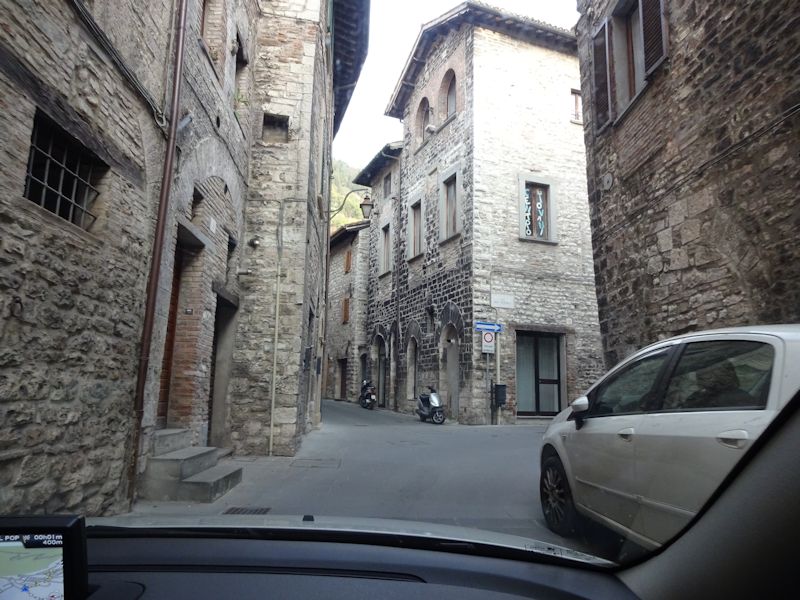
No problems for our teensy 2-door Volvo. The satnav says 400 metres to go.

We've landed at the Hotel Relais Ducale, facing the huge Piazza Grande overlooking the medieval historic centre. It's brilliant, not expensive, extremely helpful and friendly staff, and right in the middle of things. This is a bar/café on the Piazza Grande, with internal stairs leading up to what is really a second building, the original hotel, which had its primary entrance off an alley farther up the hill. They're joined now, though our room was reached through a labyrinthine climb from here; we found it easier to go in and out the back door past the original reception.
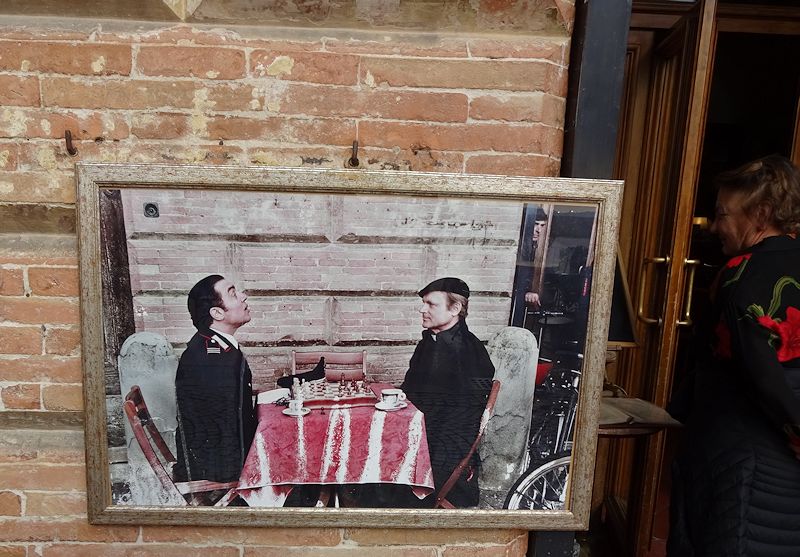
The café is virtually a shrine to Terence Hill (right), an Italian actor with an invented American name (vere Mario Girotti) who in the 1960s and '70s starred with Bud Spencer in a popular Italian series of comical spaghetti Westerns, and then beginning in 2000 became an international icon for his role as the kindly crime-solving priest Don Matteo, with 172 episodes so far and still running. All of the earlier years were filmed in Gubbio, though at some point they moved to Spoleto.

The café (with Don Matteo memorabilia)
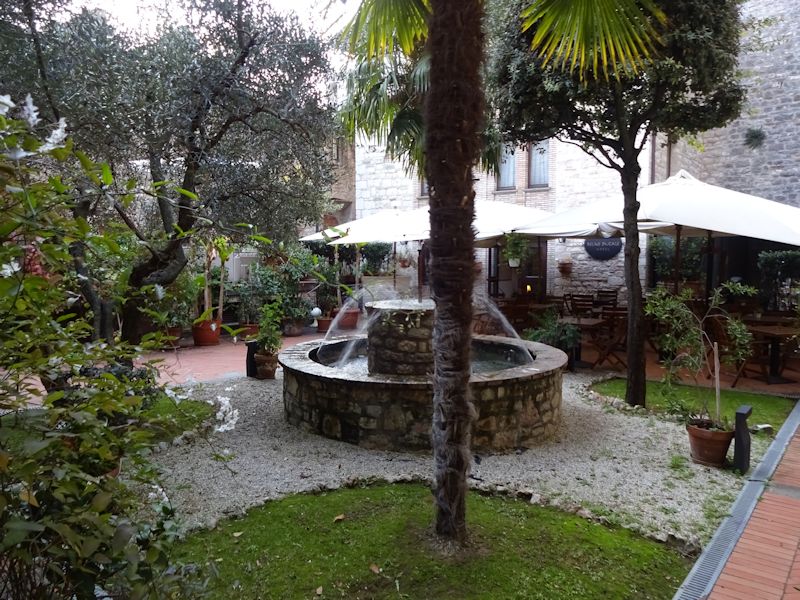
Up a few flights of stairs to the real reception to the hotel, and the courtyard

This is the Francesco Marìa de Medici room, for some reason; Frank was a cardinal and governor of Siena and, by good luck, the Duke of Montefeltro. At the age of about 50, he was forced for dynastic reasons to de-cardinalize and marry the 26-year-old Gonzaga heiress, who thus became the Duchess of Rovere and Montefeltro but wouldn't go anywhere near the morbidly obese ex-cardinal for fear of venereal diseases.

This original part of the hotel was apparently an annex to the Palazzo Ducale of the Montefeltros, just up the hill.
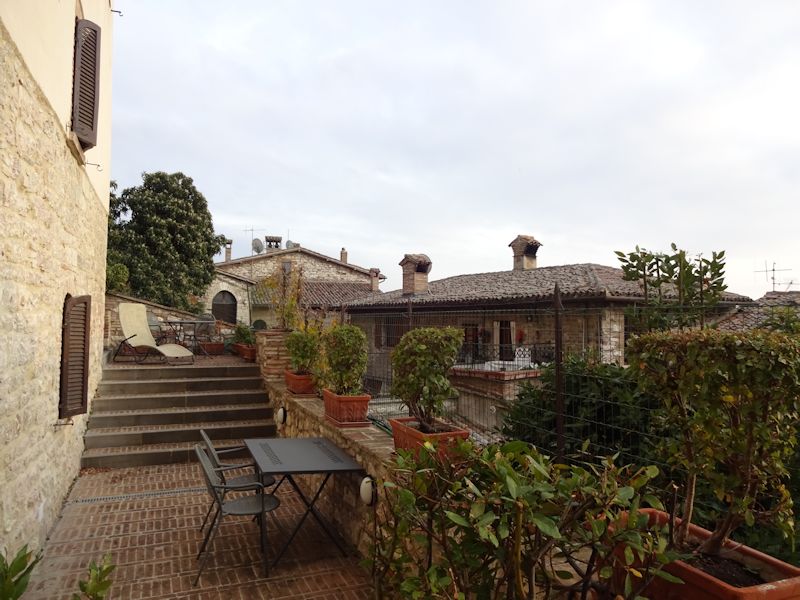
Our balcony/patio

The hotel courtyard below

Now we're going out to put the car away -- residents can drive throughout the town, visitors can only drop their luggage off. There's a free carpark, however, just 400m along near the funivia, or cable transport up the mountain to the St Ubaldo basilica for a nice view and some quiet worship if required.

On our way back from the funivia carpark. Modern Gubbio is a small city of about 35,000 souls (down considerably from its medieval heyday) in the northern part of the region of Umbria, apparently supporting itself chiefly by tourism, deservedly so.

Returning to the hotel along Via XX Settembre (every Italian town has got one, commemorating the final victory over the Papal States and completion of the unification of Italy in 1870). And there's a very handsome vehicle coming toward us.

It's a Dotto tourist train, gleaming new.

The Gubbio Express, not exactly packed with tourists today
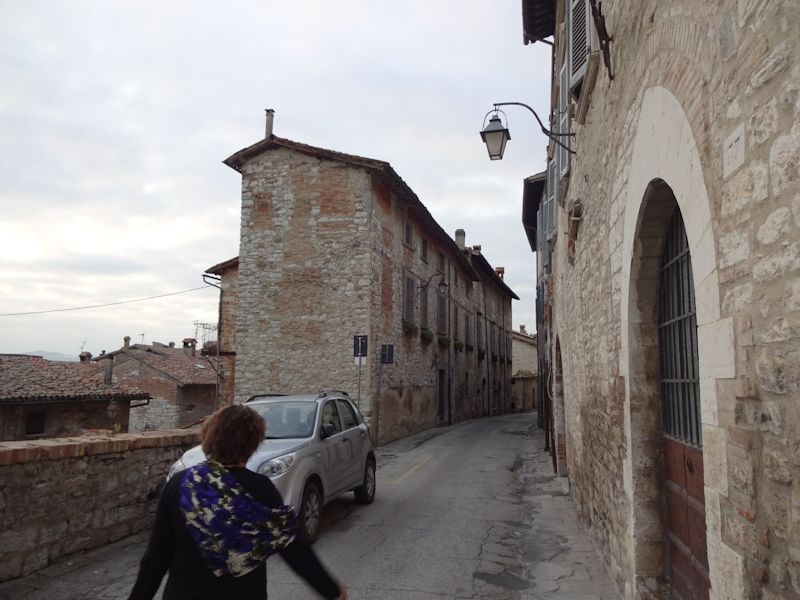
Along the Via XX Settembre towards the Piazza Grande. Gubbio (Iguvium) was originally a town of the Umbrian tribe, perhaps from as early as the 4th century BC, in the mountains to the east of the upper Tiber, which formed the limits of Etruscan influence. The famous Iguvine Tablets (also called the Eugubine Tablets, the tables of the people of Gubbio), discovered in AD 1444, are seven large bronze memorials written in the Umbrian language, covering matters of theology, ritual, and prayers of the local order of priests, which date from the 3rd century BC in an Etruscan alphabet through to the 1st century BC in the Latin alphabet.

The tablets have been described as the best and most complete surviving documentation for any of the ancient Mediterranean and European religions, and they're presently housed in the Palazzo dei Consoli, in its Civic Museum, across from our hotel.

The Palazzo dei Consoli and the Piazza Grande near the top of the medieval town

Squirrel scoping out our terrace or balcony.

The Palazzo dei Consoli from our balcony
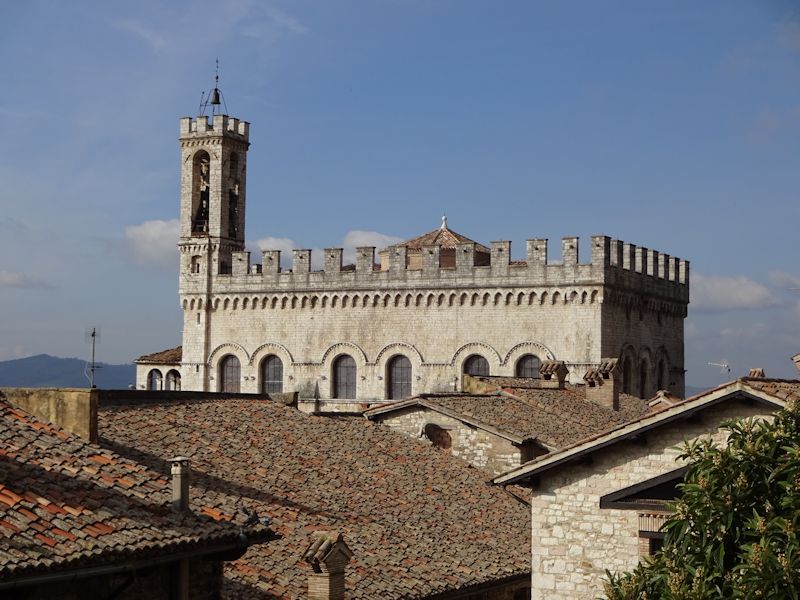
With the building of the Via Flamina road in 220 BC, up the Tiber valley and over the Apennines to connect Rome with the Adriatic colonies like Rimini and Ravenna, Roman influences spread through this region. The Romanized town spread down onto the plain, where now the remains of what has been called the second-largest surviving Roman theatre can (and will) be seen.

Squirrel, contemplative again.
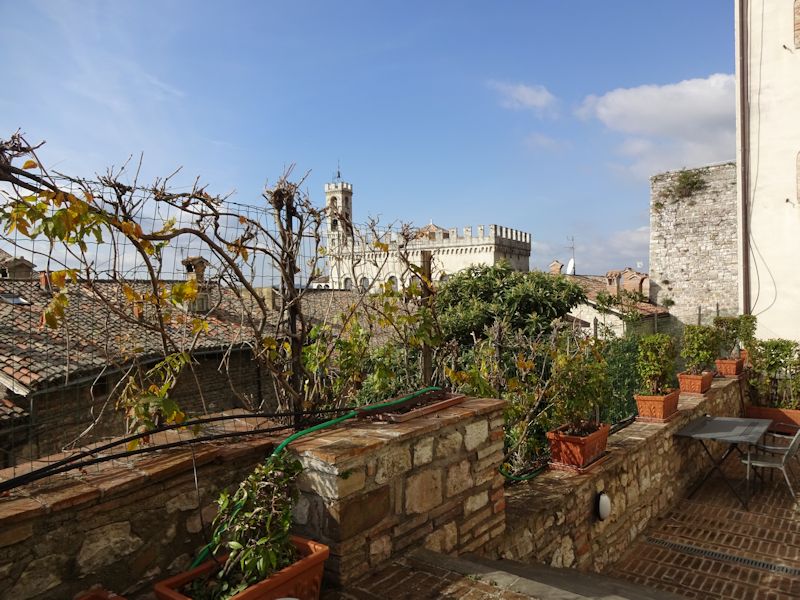
Following the decline of Roman stability in the region, however, the city was destroyed during the Gothic War of the 6th century and lay under Byzantine and then Lombard rule; given the uncertainties of those times, the centre of town moved back up the mountainside, and most of the centro storico now within the city walls is planted on the lower slopes of Monte Ingino.
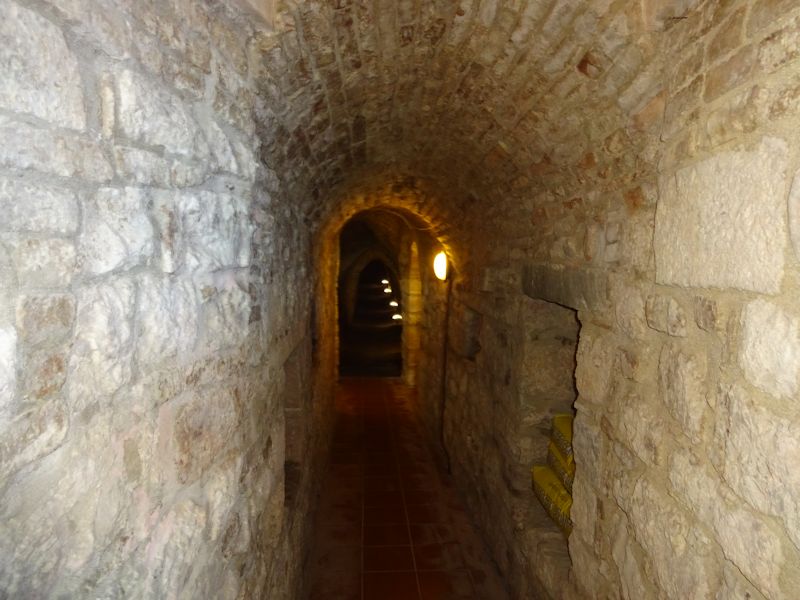
Just outside our room, this is a very old and secret tunnel apparently intended to connect our building with the basements of the ducal palace just behind, though it was evidently never completed.
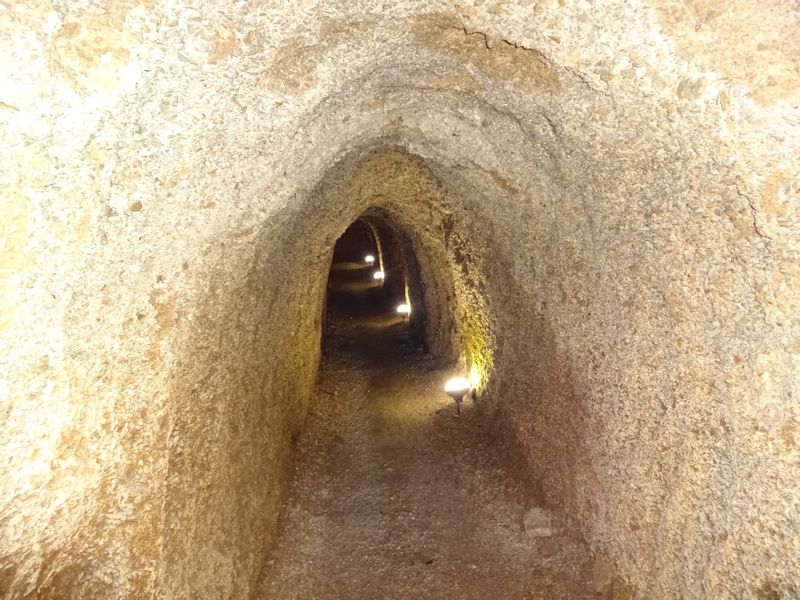
This was where the Squirrel went on her bold explorations, surprised every time to discover that the lights are on a timer.
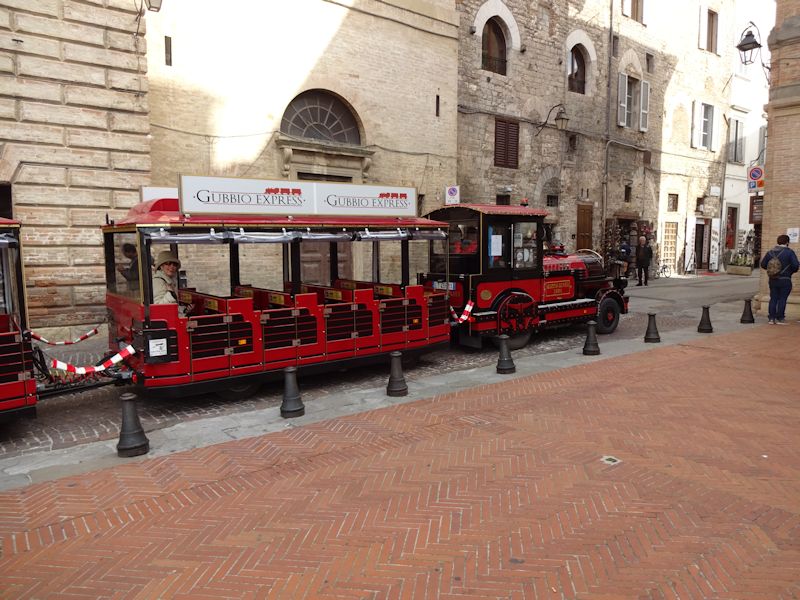
The Gubbio Express at one of its pick-up stops, at the Piazza Grande. It's the classic Dotto 'Muson River 1894', purchased in March 2015, a shiny-new little tourist train.

All aboard

The Piazza Grande was completed in 1438 to connect the Palazzo dei Consoli and the Palazzo del Podestà (where I'm standing) -- it's supported by four huge arches underneath, and was placed at the intersection of the town's four main districts.

[I've always loved to look at these trains, but had never ridden in one, until just once, in Toledo, Spain, in 2012.]

Near the hotel, Via XX Settembre, but we're headed downtown.
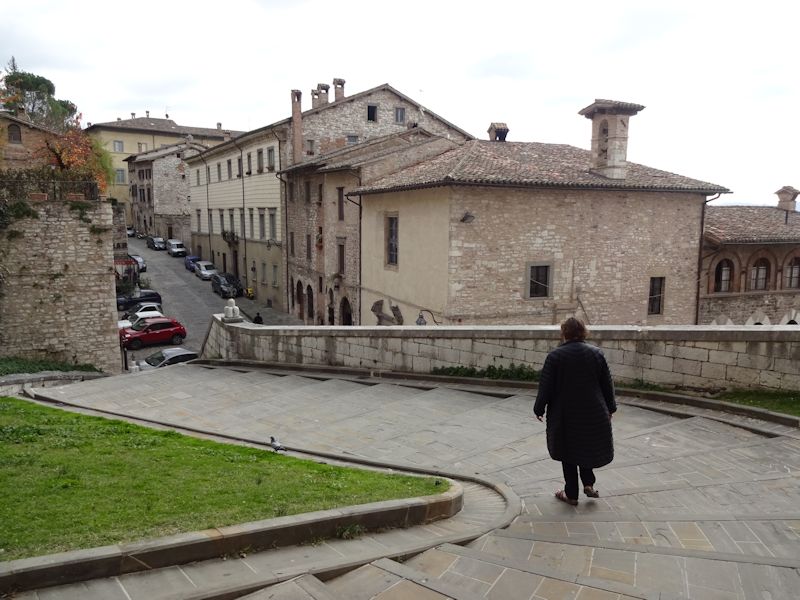
Down towards the present town centre

The central street down into the centre, the Via della Repubblica
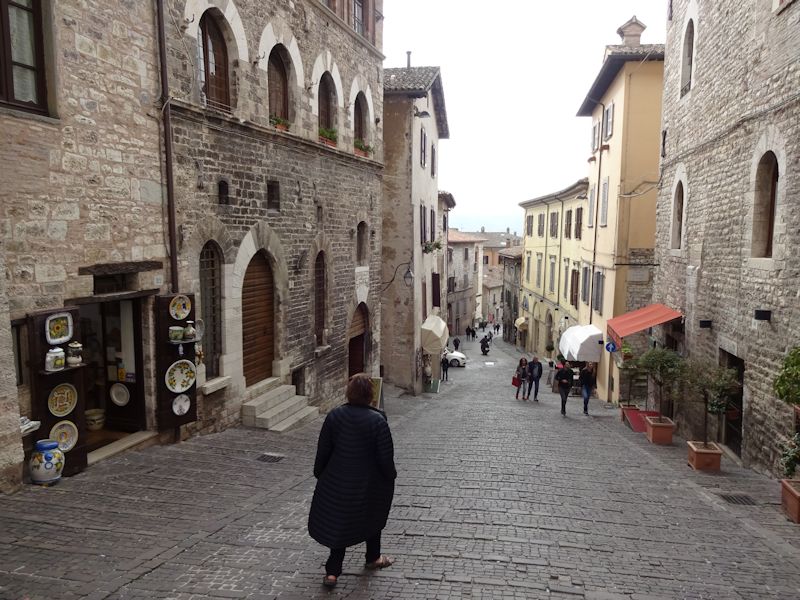

The Taverna del Lupo, recommended by our friendly staff at the hotel (and no wonder: this, another restaurant, and two more hotels in Gubbio are owned by the same family group). The "Lupo" refers to the famous story about St Francis of Assisi charming a murderous beast that had been terrorizing Gubbio (“Brother Wolf,” said Francis, “I want to make peace between you and the people of Gubbio. They will harm you no more and you must no longer harm them. All past crimes are to be forgiven.”). It's a great restaurant, a little more expensive than we were willing to sample more than twice.

This is the central Piazza Quaranta Martiri, or '40 Martyrs', commemorating the innocent civilians who were murdered by the German army on 22 June 1944 in reprisal for partisan activities in the mountains above town. (There is a mausoleum housing the victims' remains a few blocks from here.)

On the northern side of the piazza, this is the Logge di Tiratori. The ground floor was built in 1326 as a hospital of Santa Maria dei Laici, the accompanying church of which is at the far end of the arcades. The Woolworkers Guild petitioned in the mid-15th century for the right to build on top of it an open-air loggia to permit them to stretch their finished cloths to dry protected from the sun and rain; lengthy debates ensued, and in the early 17th century permission was granted.
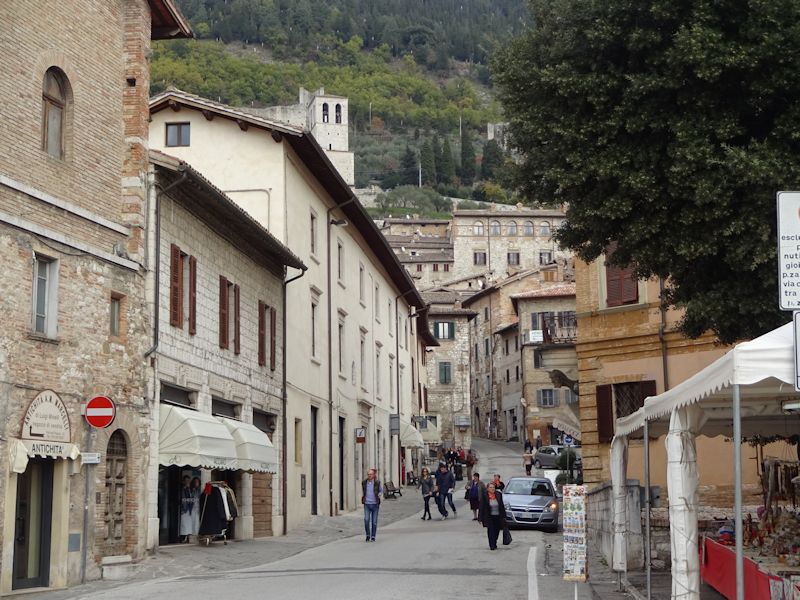
Looking up the Via della Repubblica

Also in the Piazza, the Church of San Francesco was constructed between 1256 and 1291, and the octagonal belltower added in the 15th. We'll be back -- right now we're searching for a pharmacy. Or farmacia.

The Woolworkers' Loggia and the Church of Santa Maria del Laici at the end. Right now, the pharmacy.
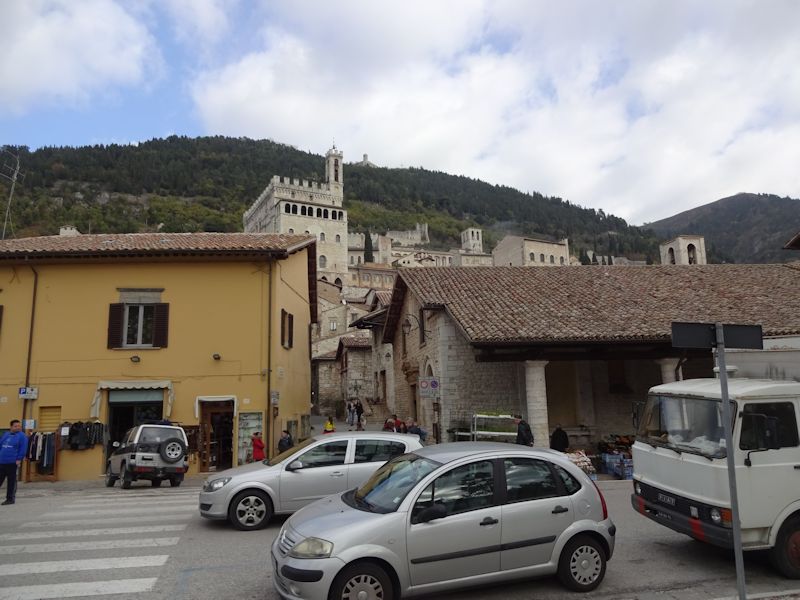
The Church of Santa Maria dei Laici, and the Palazzo dei Consoli, etc., above (and at the very tippy-top, peeking over, the Basilica of St Ubaldo (patron saint of the city)).

Specialties of the Terroir
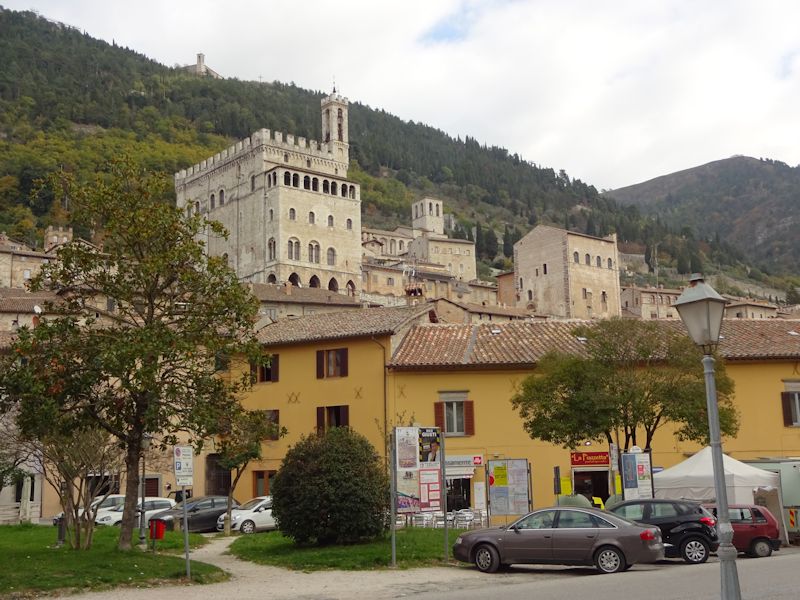
The Palazzo dei Consoli, and flanking it to the right, the Palazzo del Podestà, with the Duomo up between them and St Ubaldo peeking over the top

The same scene zoomed. The Palazzo del Podestà, aka the Palazzo Pretorio, or Town Hall, from 1348, is not open to the public.

Helpful pharmacy successfully found, we're outside the city walls near the former main entrance to the city, the Gate of Vittoria (from the nearby church of Santa Maria della Vittoria) or of San Pietro (from the Benedictine monastery just inside), which dates originally from the 11th century.

A once formidable double gate, formerly with two fortified towers flanking it
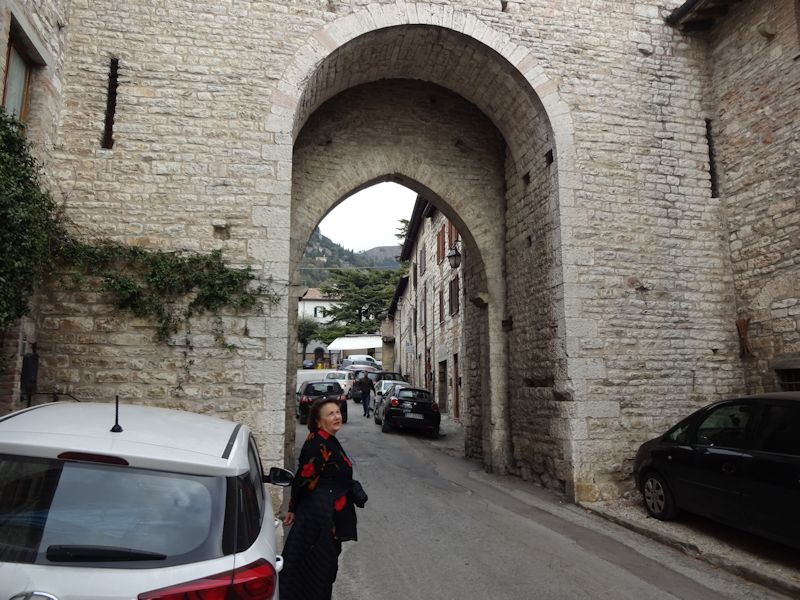

Via Mazzini looking towards the town centre again

The Porta Vittoria from the inside

Helping mum with the shopping

Street scene (perhaps Corso Garibaldi)
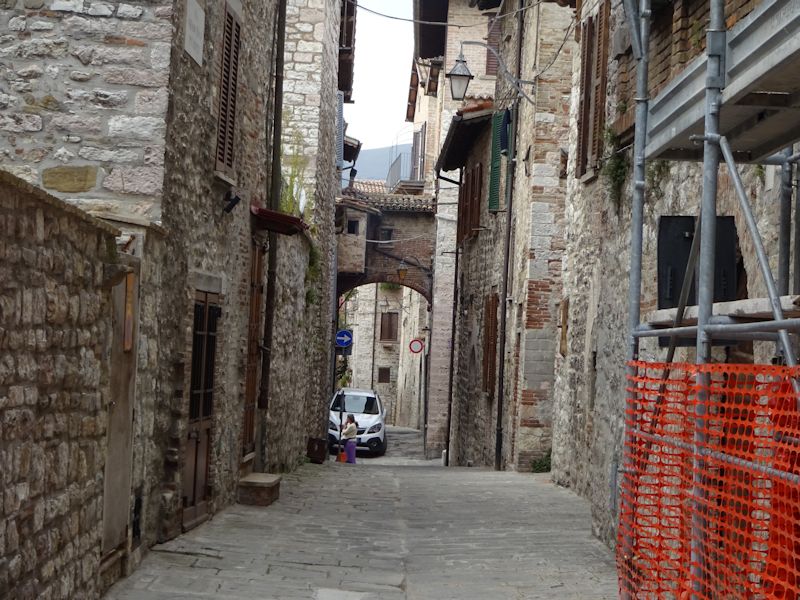

The Palazzo dei Consoli from the Via Savelli della Porta just below the level of the Piazza Grande. The top of the campanile rises 100m above the base of the foundations on this street.

Window-shopping
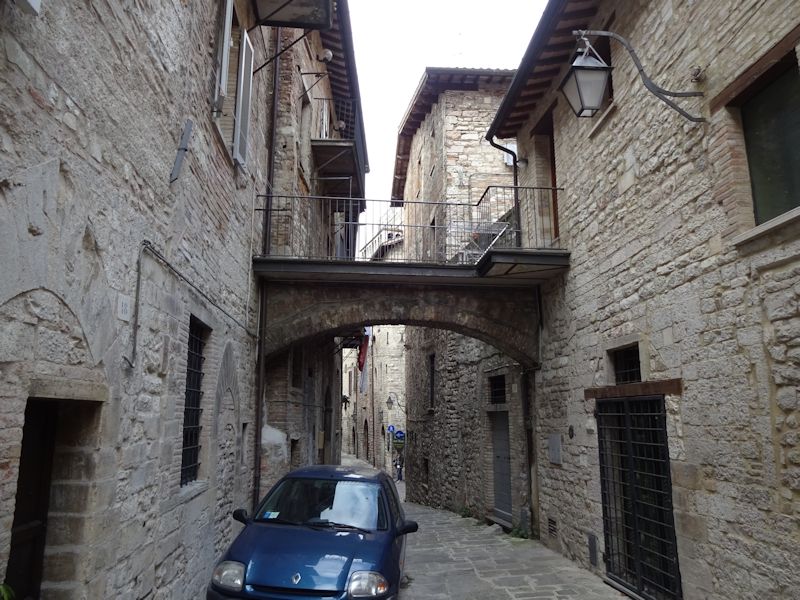
Alley scene

Via Baldassini, directly below the Palazzo dei Consoli

The Palazzo dei Consoli. Across the façade, the pattern of three pairs of mullioned windows is said to be unique to Gubbio but seen elsewhere around town. The Palazzo replaced an earlier town hall -- the work was carried out in the 1330s and housed both communal administrative offices and a huge assembly hall. It's now got the City Museum and pinacoteca, and lots of Garibaldi stuff in the Risorgimento rooms.
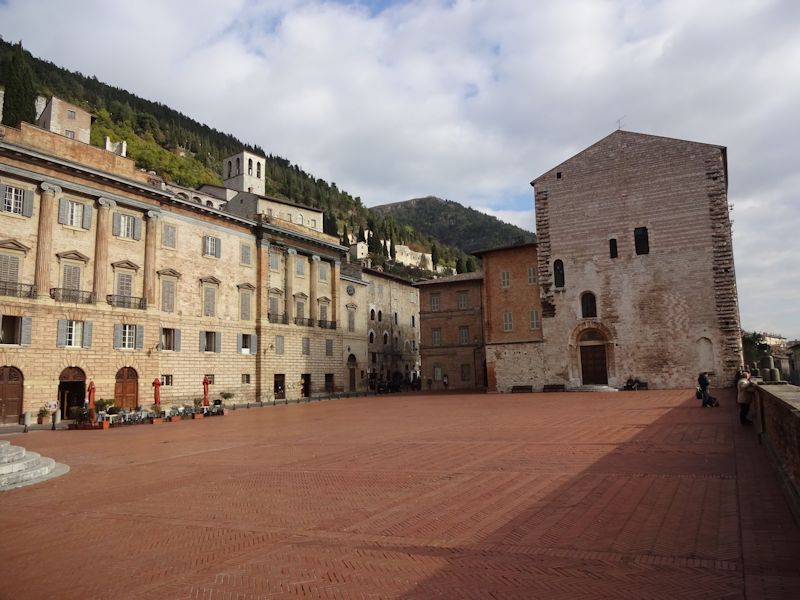
The Piazza Grande, our hotel on the far left, and the Palazzo del Podestà, or Palazzo Pretorio, presently with administrative offices

The door to our hotel, with the Ducale Palace and the Duomo behind

Gubbio below, the belltower of the San Giovanni church on the right

The belltower of San Giovanni, the Loggia of the Tiratori, and the San Francesco church

Intended as a stairway down to the street below, apparently, this was never completed.


The entrance to the Palazzo. Here we go.
      
     

 Feedback
and suggestions are welcome if positive, resented if negative, Feedback
and suggestions are welcome if positive, resented if negative,  .
All rights reserved, all wrongs avenged. Posted 16 December 2015. .
All rights reserved, all wrongs avenged. Posted 16 December 2015.
|
 Dwight Peck's personal website
Dwight Peck's personal website































































